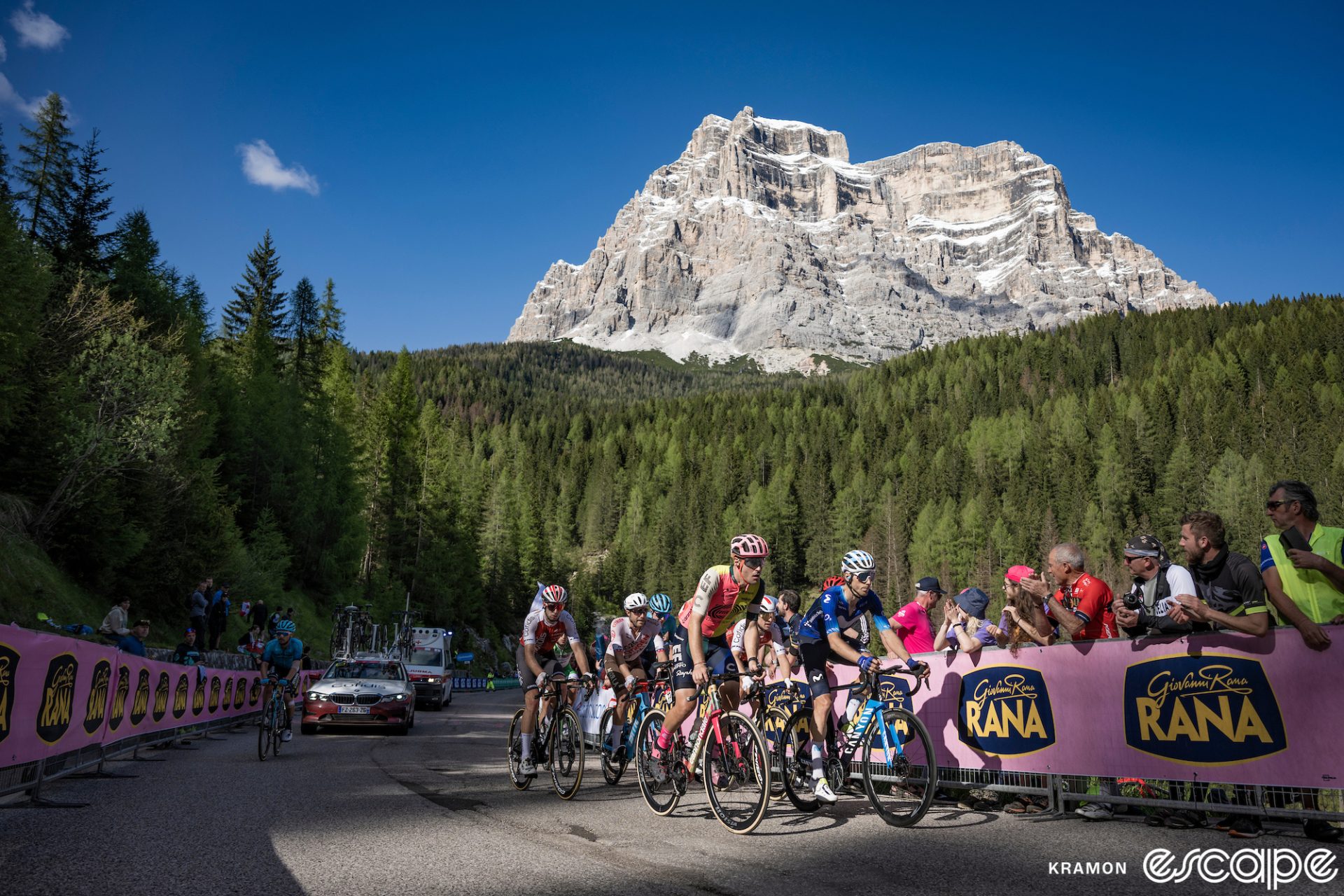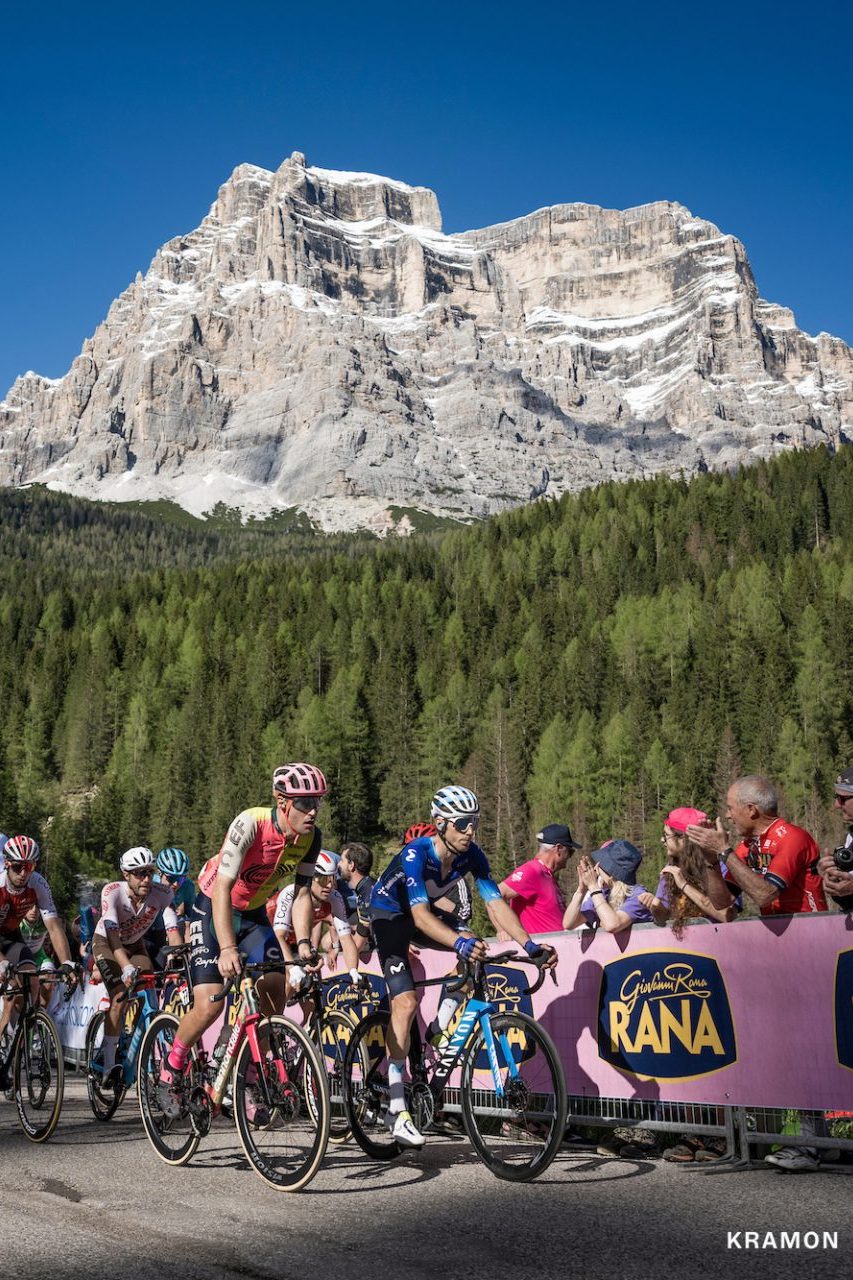The 2024 Giro d’Italia will waste little time diving into the action, the pink jersey hopefuls will need to have decent TT chops, and in contrast to 2023’s backloaded course, a varied route should keep things appetizing throughout – with shorter stages and shorter climbs than we’ve seen recently at the Italian Grand Tour.
Those are some of the major takeaways from the official route presentation, which took place on Friday in Trento, unveiling the 21 stages that riders will tackle in the upcoming 107th edition of the Corsa Rosa.
Venaria Reale near Turin will host the Grande Partenza on May 4 of next year, and just over three weeks later, the Giro peloton will arrive in Rome to close out the first Grand Tour of the season. Along the way, there are 68.2 km of individual time trialing to cover split over two TT stages, and five days that organizers deem “mountain stages” to go with a handful of other very challenging, hillier days.
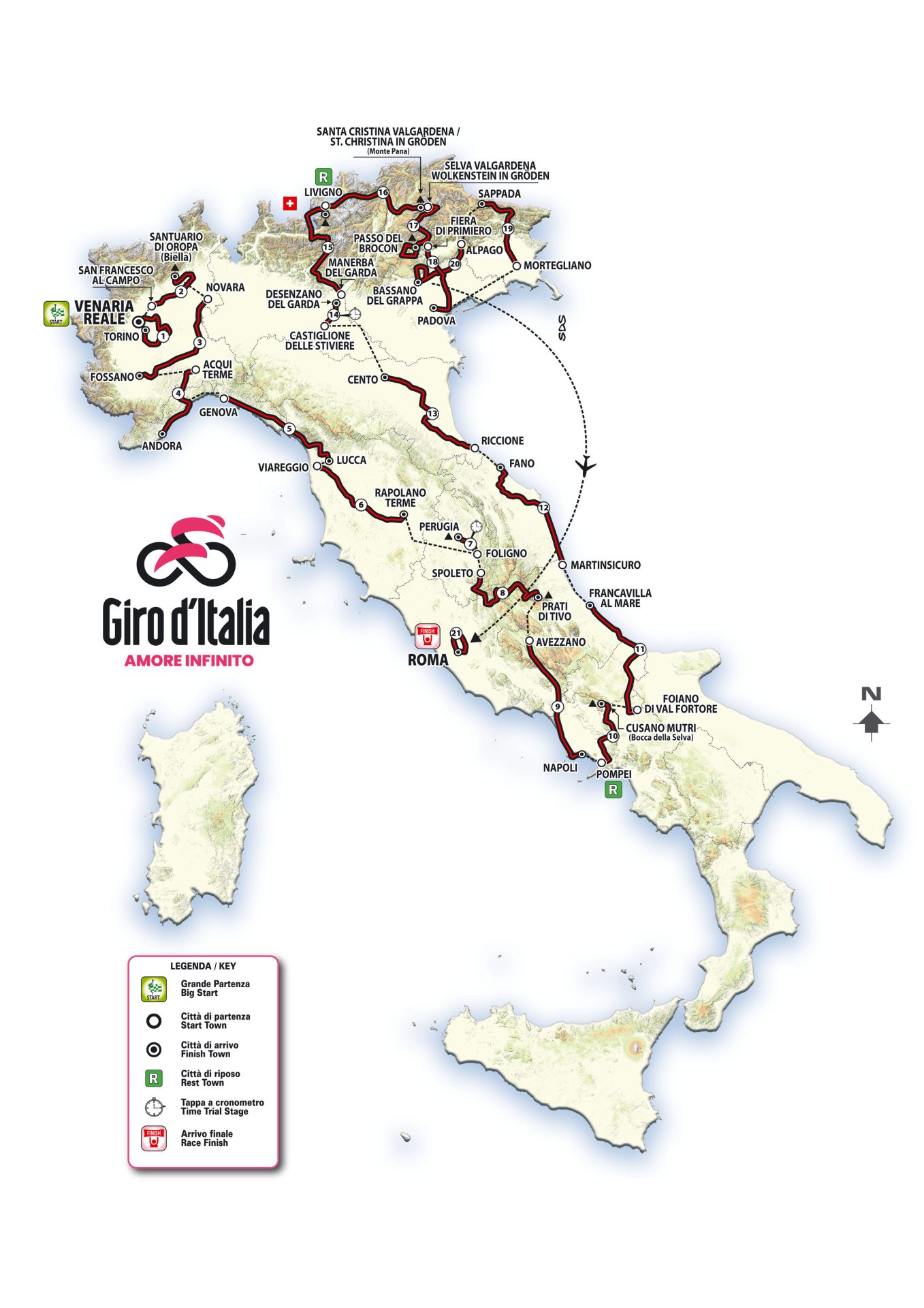
Here’s what you need to know about the route now that it has been unveiled.
We’re set to see some early action
In the past, there have been editions of this race where you could have gotten away with skipping the first few days and still seen all of the GC action, but you’re going to want to make it to this show on time. The very first stage of the 2024 Giro d’Italia will take riders over the Superga climb – often a feature of the one-day Milano-Torino race – and then the Colle Maddalena in a move that could see the climbers come to the fore immediately. Even if the up-and-down first stage does not accomplish that, the following day will as the peloton will tackle a summit finish at Oropa.

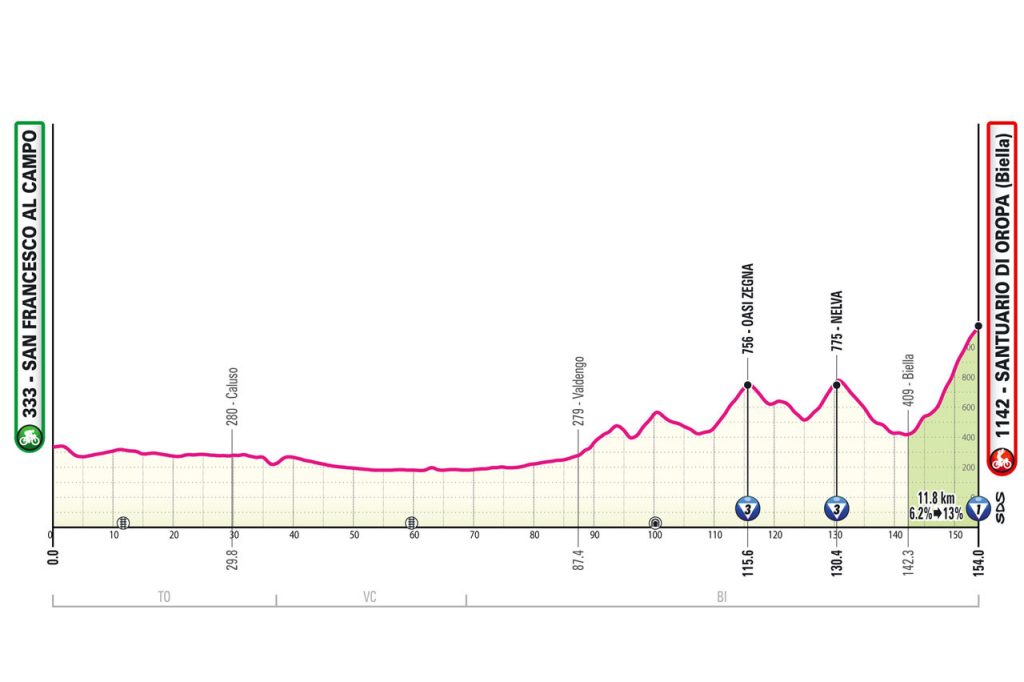
In other words, this will not be a Giro where riders and fans are waiting around until the final week to see the GC favorites showing themselves. That’s not to say the second half of the race lacks for bigger climbs; it’s just that the challenges are spread a bit more evenly through the race. That kind of approach proved to be a major recipe for excitement at last year’s Tour de France.
Following a pair of flatter days, the Giro will tackle a hilly Genoa to Lucca on stage 5 and then even cover at least a little bit of Tuscan gravel – 11.6 km to be exact – in stage 6. Then it’s onto the TT bikes for the first of two races against the clock. The stage 7 TT is a 37.2 km test.
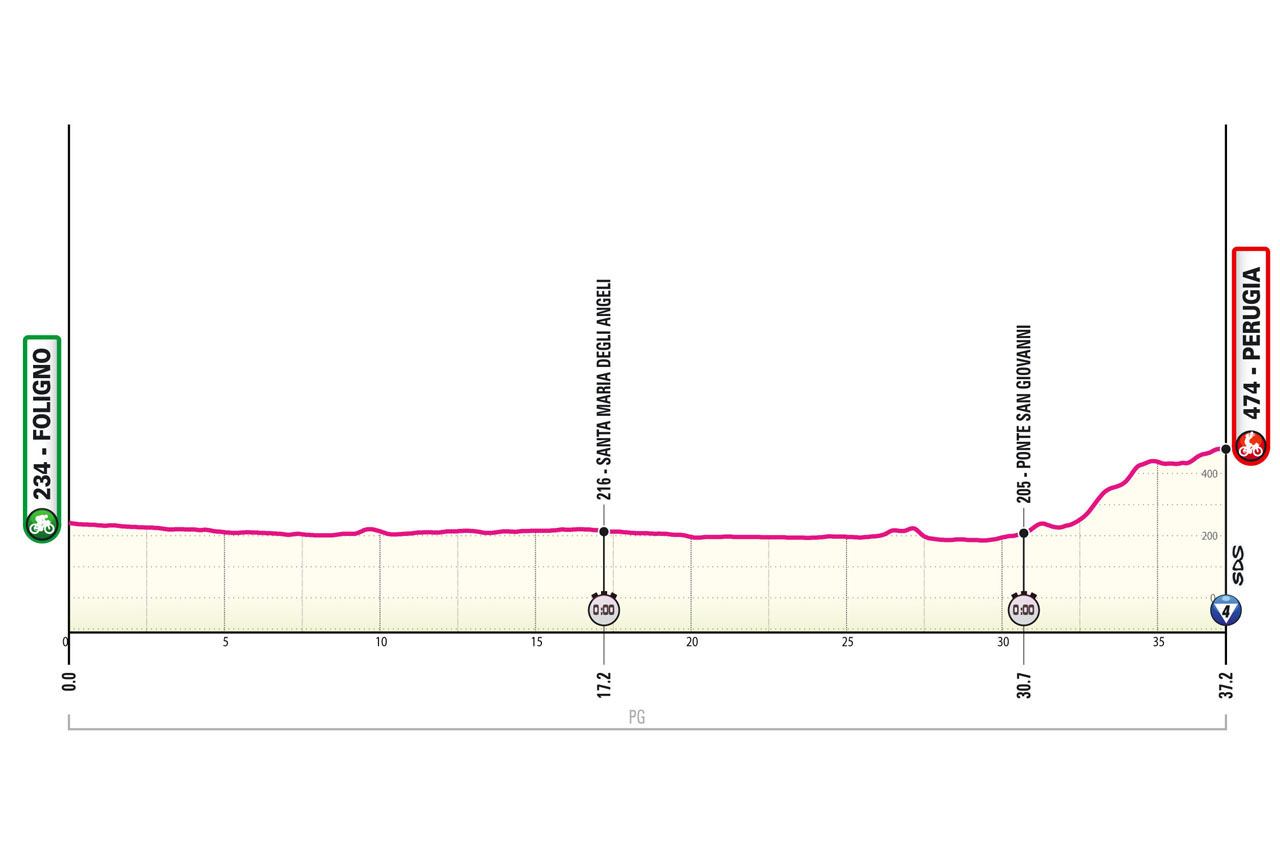
Immediately following that day is the first “five-star difficulty” stage of the Giro, a short stage from Spoleto to Prati di Tivo that features a summit finish at Prati di Tivo. After a stage 9 that could go to the fast finishers in Naples, it’s onto the first rest day.
Week Two: Dead-flat TTs and racing up high
After the day off, the peloton will head out from historic Pompeii en route to a summit finish on stage 10. Then there are three days that could go to the faster finishers as the race heads north along the Adriatic coast before the second and final time trial in Lombardy on stage 14. It’s a 31 km TT that will favor the big engines and will thus present a second obstacle for the purer climbers. At least those climbers will have an immediate opportunity to strike back on the next day.

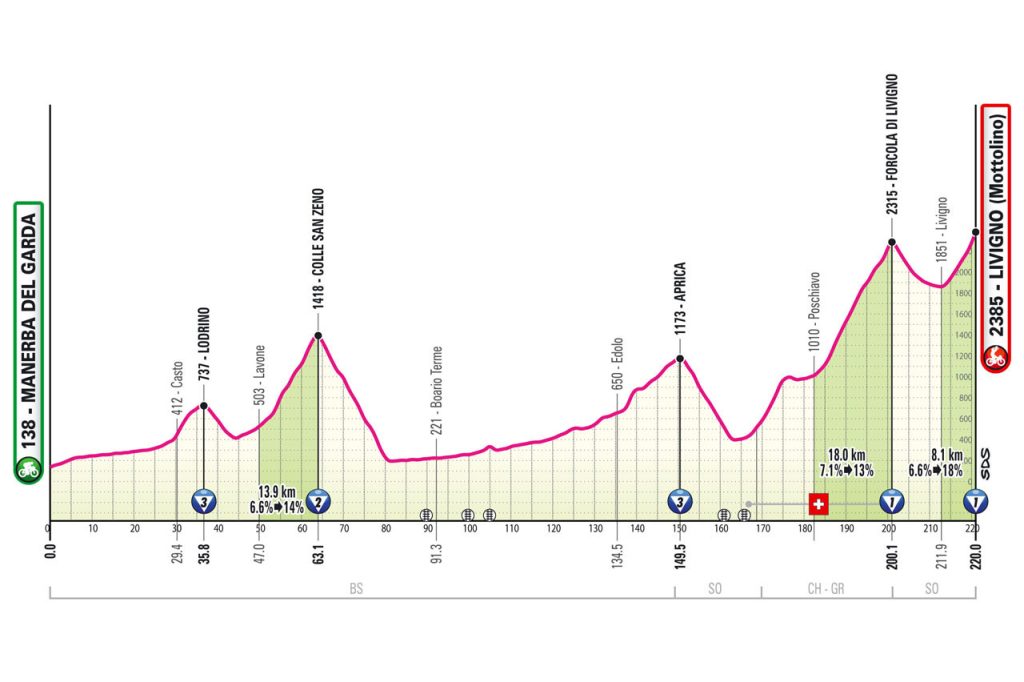
Stage 15 will foray into Switzerland and it will tackle a pair of first-category climbs in the Alps. The fact that weather forced organizers to delay stage 13 and cancel stage 19 last year does not seem to have deterred them from designing a stage that finishes at 2,400 meters above sea level in Livigno on May 19.
Week Three: Hard but not ridiculous
After the second rest day will come another day for the climbers, taking the peloton over the highest point in the race, the Cima Coppi, on the Passo dello Stelvio (2,758 meters). Interestingly enough, that famous mountain features early on in the stage 16 profile before a long stretch of downhill or flat roads before a pair of short climbs to the finish. Stage 17 will be another big day for the climbers with a profile of essentially non-stop up and down, finishing with the first-category Passo del Brocon.
Stage 18 should favor the sprinters, and then stage 19 will traverse lumpy roads in the northeastern corner of Italy before stage 20 poses on last big challenge for the pink jersey hopefuls with not one but two trips up the mighty Monte Grappa before finishing in Bassano del Grappa. From there, it will be a quick flight down to Rome for the final stage, which will favor the sprinters.
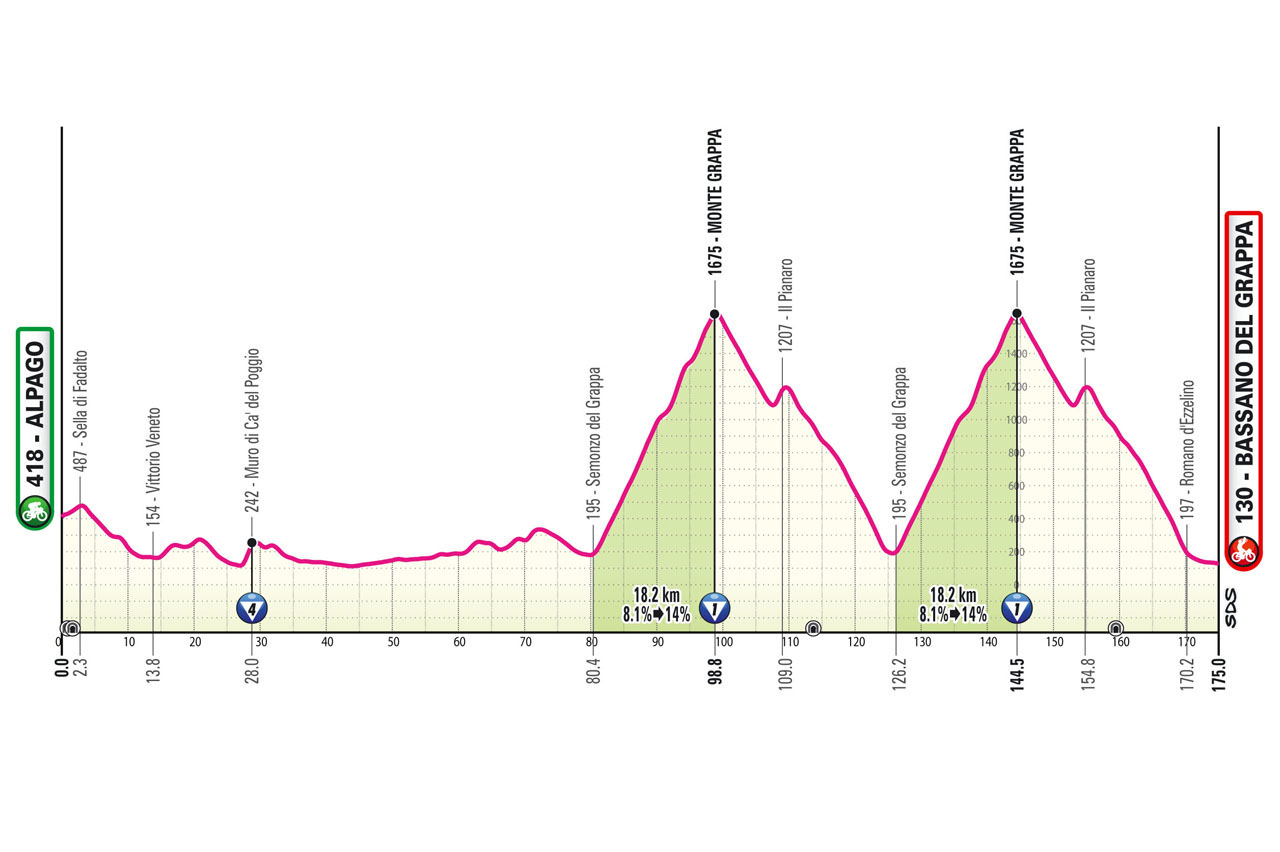
To recap, the race will start with two up-and-down affairs and the first week will also feature one time trial and also a five-star difficulty stage. The second week will also kick off with a challenging stage (from Pompeii to Cusano Mutri) and will also feature a time trial and a five-star difficulty stage, and then stages 16, 17, and 20 will be the GC highlights of that final week.
All told, it is a Giro route designed to provide a bit of something for everyone (including that little bit of gravel on stage 6) from start to finish, rather than building gradually towards a backloaded crescendo the way that organizers have often done lately.
Snap analysis: Shorter = better?
On the whole, the stages also trend shorter for this Giro than in years past, and the same is true for the climbs themselves.
From start to finish, the race will traverse 3,321.2 km, and while that’s obviously a lot of ground to cover on a bike, it will be the shortest Giro in decades. Stage 15 is the longest stage at 220 km, and three others (barely) exceed 200 km in length.
The accumulated elevation gain for the whole race is 42,900 meters, and again, while that will give riders plenty of gravity to defy, it’s a significantly smaller total than we’ve seen recently.
The point here is that Giro organizers have decided to see whether shorter stages with fewer massive Alpine slogs is indeed a recipe for excitement, as recent Tours de France have suggested may be the case. Shorter stages with shorter climbs will hopefully make for dynamic racing, and at the very least, it should mean fewer long stretches of unchanging race circumstances for broadcasters to fill with rambling commentary.
Beauty in balance
Another overarching takeaway is that this is a race for the all-rounders. Pure climbers won’t love the presence of two time trials. Although the first time trial does end with an ascent, it’s still one for the specialists, and the second one is even more of a power TT. As is always the case in a modern Grand Tour, the climbing stages will still dominate the GC conversation, but those without skill on the aero bars stand to lose quite a bit of time against the clock.
The climbs are also relatively varied. There are some high altitude finishes in the Alps but there are also plenty of punchier challenges, and then there’s that hint of Strade Bianche on stage 6 that will at least give us a taste of gravel jeopardy.

In other words, the 2024 Giro will appeal to the more complete GC contenders, just like it did in 2023 – and much more so than it did the year before that when the climbers had the luxury of covering just 26.6 km against the clock in the whole race.
As of October, we don’t really have a great idea of who will be heading to the Giro in May, but Friday’s route reveal could go a long way to helping riders make that decision. Those who are hoping for a shot at Grand Tour glory will have been anxiously awaiting the details of what is on tap for next year’s race. Now that the menu has been revealed, we wait and see who decides to reserve a table at the 2024 Giro.
What did you think of this story?
